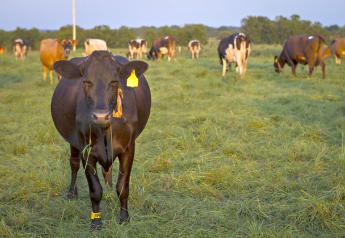Liver Biopsies Could Replace “Bugs and Drugs” Approach

What was once a relatively invasive and tedious procedure has become a potentially standard method of monitoring the health and nutritional status of dairy cows.
A liver biopsy extracts a tiny sample of a cow’s liver tissue, which can be evaluated for levels of trace minerals like zinc, selenium, copper, and manganese. Liver biopsies as a nutritional monitoring tool were discussed at length on a recent Dairy Cattle Reproduction Council webinar by Dr. Craig Louder, Technical Service Veterinarian for Axiota Animal Health.
“When cows aren’t doing well, I think we too often take a ‘bugs and drugs’ diagnostic approach – ‘What bug does she have and what drug can I use to fix it?’” Louder noted. “By proactively monitoring liver status, we can solve health problems at a more fundamental level, and pre-empt some of them from occurring at all.”
Louder said if liver biopsies show trace mineral levels that fall out of an anticipated range, those minerals may need to be adjusted via ration changes and/or supplementation to support transition-cow health, reproductive cyclicity, uterine health, embryo viability, and calf vitality.
That helpful information once was rather challenging to capture, but the process has recently changed for the better. “We used to do liver biopsies with an instrument called a ‘punch biopsy,’” Louder explained. “It was fairly invasive and took a sample from the liver using a tool about the size of an ink pen. It sometimes led to bleeding, clostridial disease, and peritonitis, and it scared a lot of people off.”
Now the process is safer and simpler with an instrument called the “Tru-Cut.” A Michigan State University veterinary bulletin said liver samples can be extracted via the Tru-Cut method “quickly, conveniently, and with little or no risk to the animal.”
Louder said the liver tissue sampled in this manner is about ½-inch long and the width of a piece of mechanical pencil lead. The 14-gauge needle used to extract it is the same size that would deliver IV calcium for a case of milk fever, only longer.
“It’s a 6-inch needle, and we make a small incision on the right side of the cow, between the 10th and 11thribs,” Louder explained. “We insert the needle through the muscle wall and withdraw about 10-15 mg of tissue from the liver.” The Michigan State authors noted some evaluations require 20 mg of tissue, so two samples may be required.
According to Louder, hepatic trace mineral levels in adult dairy cows are not static. They wax and wane through the pregnancy cycle, and will be lowest at the time of calving, when the dam has transferred a good share of her reserve to her fetus via the bloodstream. Levels then will rebuild in the liver with the next pregnancy, reaching their peak at about 6-7 months gestation.
“The timing of the sample is not as important as knowing the stage of pregnancy at which it was taken,” explained Louder. “If we’re having a high incidence of ketosis, metritis, or retained placentas, there would be great value in screening 10-12 fresh cows and checking their levels. Dry-off is another excellent time to check because those cows will have been on the lactating herd ration for a long time. But the expected levels will vary at those two sampling points.”
He also noted the merits of taking liver biopsies of calves to check their trace mineral status -- as either an ongoing monitoring metric, or a diagnostic tool during health challenges such as a pneumonia outbreak.
Liver biopsies are widely used in New Zealand for dairy animal monitoring, and Louder would like to see the practice expanded in the U.S. In a poll taken during the webinar, about 75% of the audience had never had a liver biopsy performed on their animals.
“I think they has a lot of potential for proactive health monitoring in dairy animals,” he stated. “The more we know what’s going on physiologically in the herd, the more we can help those cows and their calves maximize their potential.”







